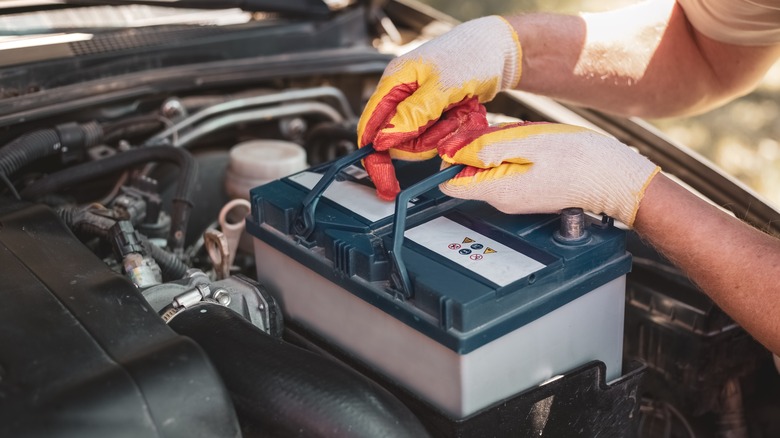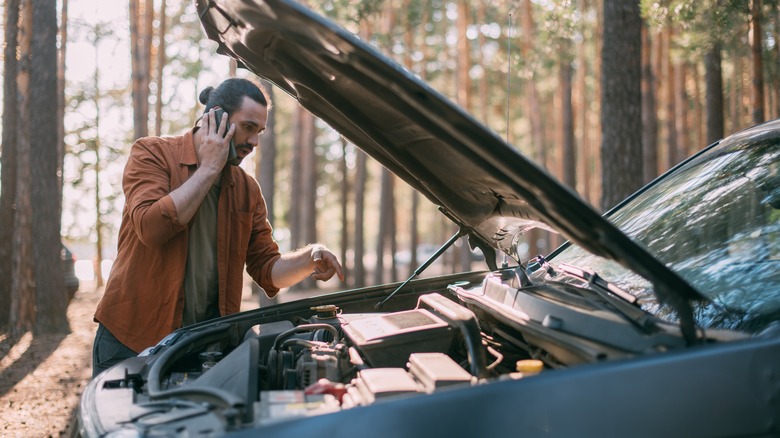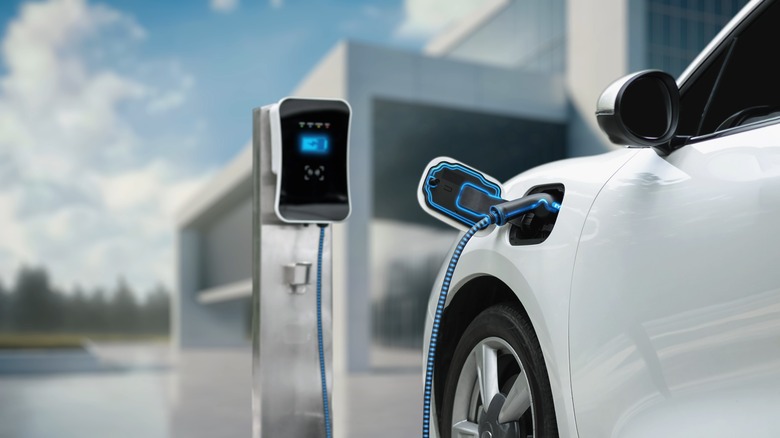What Happens If Your Car Battery Dies While You're Driving?
When on the road, it can be scary when something goes wrong with your car — from electrical to mechanical issues to running out of gas. However, the car's battery dying while in the middle of a commute is no picnic either. It's not as easy as hoofing it to the nearest gas station and back to the car. When a battery dies while on the road, you need to wait for assistance, and it typically means you need a new battery, which isn't the cheapest expense. Costco might have a good deal on car batteries, but then you have to worry about finding a decent brand.
There are warning signs when a battery is about to kick the bucket, such as a car struggling to turn over or sounding weak when you go to start it. Most of the time you won't even notice your car battery died in the middle of a drive. As long as the alternator is still in working order, you won't notice until you turn off the car and it doesn't start again.
If you're on a drive, minding your own business and you car suddenly stalls and doesn't restart, there's a bigger issue at hand. In that case, flip on the hazard lights and signal that you're pulling off to the side of the road. Wait a bit and then try to restart the vehicle. If the car starts, it needs to go to a mechanic ASAP. If it doesn't start, call roadside assistance.
It could be a larger problem than the battery
Car batteries don't often last longer than five years. So, if the battery in your car is nearing the end of its lifespan, it's time to swap it out for a fresh one. However, it's not the only component providing an electrical charge to the rest of the powertrain. The alternator plays a big role in a running vehicle. Once the car is on and running, the alternator takes over for the battery and supplies power to the majority of a vehicle's electrical components.
The alternator is an important piece of the puzzle to check if your car won't start. So, if your car stalls while driving, and you suspect it's the battery, it might be a faulty alternator instead. A good alternator could keep the car's electrical components on until you turn the car off. If the car stalls and the interior lights turn off, and you can't turn on the hazards, it's likely an issue with the alternator. If this is the case, call roadside assistance and have the car taken to the shop.
What if you drive an EV?
There's a considerable difference between an ICE vehicle and an EV battery dying. While there could be a significant problem with an ICE vehicle if the battery dies while driving, it's more like running out of fuel if it happens to an EV. It doesn't make it any less panic-inducing. Luckily, EVs give plenty of advance warning before the battery runs out of a charge while driving.
When an EV is losing its charge, many will go into a low-power mode, called "turtle mode," that will decelerate the vehicle and won't allow the driver to go over a certain speed. If you're unable to get to a charging station while the vehicle is in its low-power mode, pull over to the shoulder as soon as it's safe to do so, put on the hazard lights, and call roadside assistance. You can have them tow you to the nearest charging station.


